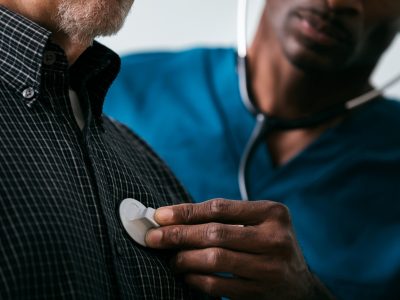Patient interactions. In most medical practices, patients come to visit their doctors periodically. The interval between visits is often dictated by the severity of the disease or the potential toxicity of the treatment regimen. In a rheumatology practice, follow-up times typically range from 2-4 weeks for new patients to allow for diagnostic studies to be completed, 12 weeks to 6 months for active disease, and for stable monitoring or low-toxicity, over-the-counter drug therapy, annual visits may suffice.
When we approach a patient for evaluation and management of disease, the history segment is the most important component of the visit, accounting for approximately 70% of diagnostic clues. The physical exam accounts for another 20%, and the final ten percent is usually found in diagnostic tests, such as laboratory tests, imaging studies, or physiologic studies, which may also include tissue studies like biopsies.
With the pressure of the volume of patients that must be seen to keep a medical practice viable, and the many questions raised by information and disinformation available via social media and hearsay, many healthcare providers unintentionally shortchange patients in obtaining a comprehensive medical history.
During their medical training, we are taught paradigms of disease and algorithms of treatment that often prompt us to expedite a visit by presuming we already know what the patient is going to say based on a few clues. This is effective probably 80 to 90% of the time; however, when a patient is an outlier, these assumptions often serve the patient poorly in terms of quality care.
I find that I most successfully solve “mystery problems” that have escaped definitive diagnosis by spending that extra time with patients. I recommend that my patients journal their medical progress, capturing details that are often forgotten in the heat of the moment when patients are hyper-focused on the opinions and explanations of the healthcare provider. When patients describe their symptoms in their own words, a little probing often helps them reach conclusions that are manageable.
The diagnosis may then require additional targeted studies or a referral to another specialist. In the end, many times a symptom/sign complex can be managed with a combination of lifestyle changes, holistic measures, and allopathic medications prescribed by the healthcare community. Faith in a physician’s capabilities and conclusions is also central to engaging an effective treatment regimen. Healthcare is a multifaceted process, but let us not forget that the patient is the most important piece of the puzzle. So my advice to patients: Always come prepared to collaborate with your healthcare provider.


 Congratulations Dr. Parris will be honored for work with the National Psoriasis Foundation
Congratulations Dr. Parris will be honored for work with the National Psoriasis Foundation